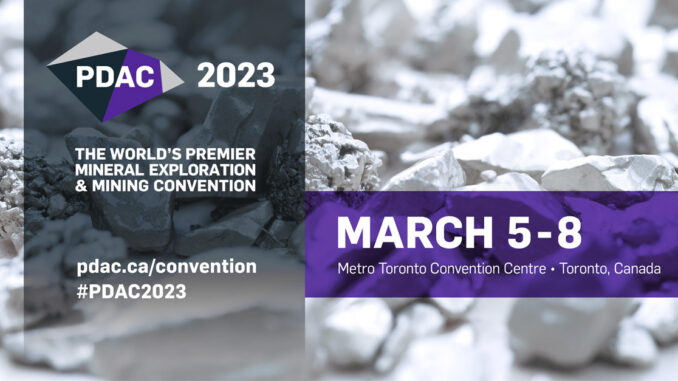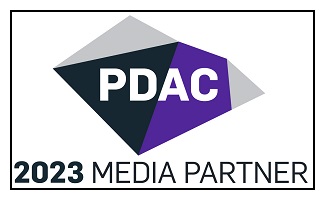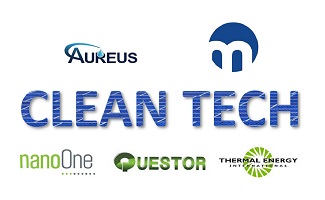The Prospectors & Developers Association of Canada’s (PDAC) Convention holds a prominent position within the mineral exploration and mining industry.
Once again, eResearch returns this year as a PDAC 2023 media partner.
The annual conference, which brings together mining executives, geologists, analysts, investors, students, and government officials, plans to offer hundreds of hours and more than 100 sessions of mining content.
Similar to previous years, the online event will be divided into different programs including Capital Markets, Corporate Presentations, Indigenous, Industry Presentations Investor Exchange, Keynote, Short Courses, Student, Sustainability, and Technical Sessions.
A summary of a Keynote speech by Sinead Kaufman, the Chief Executive of Rio Tinto Minerals, titled “Mining for the Future” is overviewed below.
Mining for the Future: Rio Tinto’s Commitment to Sustainability and Decarbonization
Sinead Kaufman, the Chief Executive of Rio Tinto Minerals, discussed the company’s commitment to sustainability and decarbonization efforts in the mining industry. She emphasizes the importance of supporting a better social license to operate and highlights the need for a sustainable approach to growth. Kaufman believes that the integration of the supply chain is critical in achieving decarbonization, not only within Rio Tinto’s operations but also for its customers and partners.
Transitioning to Renewable Power and Electrification
To achieve these goals, Rio Tinto is focusing on several key initiatives. One of the primary steps is transitioning to renewable power and electrifying their operations and mobile fleets. They are investing heavily in technology development to decarbonize areas of the business where viable solutions do not yet exist.
Kaufman states that Rio Tinto plans to spend approximately $7.5 billion in capital by 2030, resulting in a 50% reduction in greenhouse gas emissions during that timeframe.
Investment in Research and Development
Furthermore, Rio Tinto is increasing its investment in research and development to address technological gaps. Kaufman acknowledges that some projects may not succeed, but it is crucial to allocate sufficient time and resources to drive innovation.
Additionally, the company aims to grow its capital in commodities that support the global transition to net-zero emissions.
Specific Initiatives within Rio Tinto’s Operations
Kaufman discussed specific initiatives within Rio Tinto’s operations. Electrification of their fleet is a priority, but current battery technology limitations make it challenging to fully rely on electric trucks.
The company is piloting electric trucks with Caterpillar and Komatsu and expects to deploy electrification between 2030 and 2035 across all business sectors. As an interim step, Rio Tinto is exploring the use of biofuels, conducting trials at different operations.
Renewable power is another focus area for Rio Tinto. They have successfully implemented wind-powered generation at the Diavik mine and are investing in solar and wind power facilities in the Pilbara region.
Kaufman highlighted the significance of investing in renewables, as it aligns with Rio Tinto’s role as a power generator in the region. The company is also exploring power purchase agreements and other solutions to adapt to infrastructure availability in specific locations.
Offsetting Carbon Emissions and Nature-Based Solutions
Offsetting carbon emissions is an integral part of Rio Tinto’s decarbonization strategy. The company aims to find sustainable nature-based solutions near its sites and leverage its substantial land portfolio, which spans approximately 4 million hectares.
Kaufman emphasized the importance of balancing conservation efforts with providing economic benefits to local communities. Rio Tinto is pursuing nature-based solutions and regional carbon credits in the areas where they operate.
Additional Initiatives and Collaborations
Last year, several studies were conducted on landholdings in Australia, Madagascar, South Africa, and Guinea to identify projects that could potentially provide around 500,000 hectares of land for offsetting carbon emissions. These projects focused on a combination of conservation, restoration, and sustainable land management practices.
By 2030, it is expected that these initiatives will offset approximately one million tonnes of CO2, with ongoing efforts to explore additional nature-based solutions for biodiversity improvement globally. As part of these projects, over 640,000 saplings were planted across 500 hectares of land, resulting in improved biodiversity and sustainable farming practices. The selected plant species also possess high carbon yields, making them valuable for restoring degraded forests.
Technology’s Role in Net Zero
Technology plays a vital role in achieving net-zero emissions by 2050, but some necessary technologies are currently lacking. For instance, decarbonizing blast furnaces and substituting process heat technologies pose significant challenges.
To overcome these hurdles, Rio Tinto has taken a proactive approach by re-establishing the Chief Scientist role and doubling the research and development (R&D) budget to approximately $400 million per year.
The company collaborates with academia, other industries, and entrepreneurs to find solutions and conducts extensive research through two critical research centers in Montreal and Melbourne.
Scandium from Waste
One notable success is the Scandium project, which processes waste from Rio Tinto’s smelter to extract scandium—a critical mineral with limited global supply. Through innovative processing methods, Rio Tinto will become one of the largest producers of scandium in the Western world, meeting 20% of global demand.
Additionally, the company has developed an aluminum-scandium alloy, which exhibits superior properties compared to pure aluminum. This product has significant potential applications in industries such as aerospace, defense, and renewable technologies.
Rio Tinto’s commitment to technological advancements extends beyond mining operations. A joint venture in Canada aims to eliminate direct greenhouse gas emissions from aluminum smelting, a breakthrough technology that has undergone significant research and development and is now moving toward commercialization.
The Importance of Collaboration and Partnerships
The company also collaborates with Nano One, a Vancouver-based firm that has patented a low-cost, high-performance cathode for lithium-ion batteries. These partnerships allow Rio Tinto to stay at the forefront of future technology needs and provide essential materials for emerging industries.
Collaboration with various stakeholders has become increasingly important for Rio Tinto. The company engages with governments, suppliers, First Nations communities, and new industry players to establish long-term partnerships.
These partnerships are crucial for developing sustainable supply chains, as demonstrated by the Department of Energy’s Innovation Challenge, which awarded $2.2 million to a Rio Tinto-led team to support the development of carbon capture and storage at the Tamarack joint venture in the United States.
Partnerships are also formed with automakers like Ford Motor Company and Volvo, aiming to supply low-carbon aluminum, copper, and lithium for electric vehicles and low-carbon production processes.
Similarly, an agreement with BMW focuses on supplying low-carbon primary aluminum from Rio Tinto’s hydropower operations in Canada, combined with recycling content for vehicle production in the United States.
Final Thoughts
Sinead Kaufman outlined Rio Tinto’s commitment to sustainability and decarbonization in the mining industry by investing in renewable power, electrification, technology development, and offsetting carbon emissions. They recognize the need for collaboration and partnerships to accelerate progress and achieve their ambitious goals. By prioritizing sustainable practices and addressing technological challenges, Rio Tinto aims to contribute to a greener and more environmentally responsible future.




